Richard Rayman has run every day for 39 years, two months and 17 days, beginning December 10, 1978. 71 years old, Rayman is a former dentist and full-time member of the University of Toronto’s Faculty of Dentistry, still working 9-5 five days-a-week.
“I realized I was on a streak and I just kept running,” says Rayman, a veteran of 353 marathons. “Running, as much as anything else, like brushing my teeth, is just something I do.”
iRun General Manager Ben Kaplan caught up with Rayman and asked him what he’s learned from so many days on the road.
iRun: Why running?
Rayman: It’s the simplest thing in the world to do. Put on your running shoes and go outside. You don’t need to spend money. You don’t need to do anything. But you have to go outside.
iRun: 39 years, two months and 17 days of running and never once on a treadmill?
Rayman: I’ve never run on a treadmill in my life.
iRun: Has that much running interfered with your life? Do you have family, friends?
Rayman: I do, yes. I’m married and have two kids and my kids are both married and they each have kids. I have five grandchildren. A normal, happy life.
iRun: Does you wife run?
Rayman: She doesn’t run, but I’ve run 353 marathons and she’s been at the finish line for over 300 of them.
iRun: That’s love.
Rayman: She knows more about marathon running than most people running marathons.
iRun: So many marathons, so much practice. What do you like better, race day or rehearsal?
Rayman: The way I’m running now, they’re about the same.
iRun: How’s that?
Rayman: I’m just running so much slower now, but the truth is: I still love being at a marathon. I love the running culture. I love being around runners. And I love finishing a marathon.
iRun: 353, and it hasn’t lost its lustre?
Rayman: It’s still nice getting a medal.
iRun: What’s your fastest marathon time?
Rayman: In a different lifetime I ran 2:47:43, in the early 80s. I did that twice; in a marathon outside Rochester and a second slower at the Calgary Marathon. I used to say I could run a sub-three marathon with my eyes closed.
iRun: And now?
Rayman: I say never say that because it comes back to bite you. In January, at my marathon in Miami, it took me 2:47 to get to the half.
iRun: What’s your typical finish like now?
Rayman: Between five and a half and over six hours, depending.
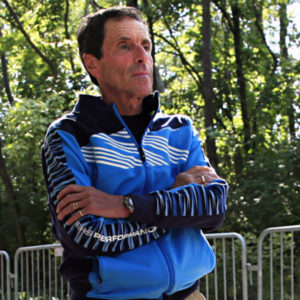
iRun: As such a competitive person, does that square with you?
Rayman: There’s a guy named Mark who works with John Stanton and he saw me at the Scotiabank Waterfront marathon and told me that I have nothing to prove anymore. Since then, it kind of stuck. I’d love to have a good day, but it’s getting harder.
iRun: What are your current goals?
Rayman: If I can start and finish, I’m happy.
iRun: Are you currently in physical pain when you run?
Rayman: It hurts. Years ago when it hurt, well, it always hurt. We all get tired. But years ago I’d fight through it, now I just want to finish so if I have to walk, I walk. In Miami, I walked the last eight miles. I’ll tell you what, though.
iRun: What?
Rayman: It still felt good. I finished.
iRun: Of the 353 marathons, what’s your favourite?
Rayman: I have three, no—four. I love New York. New York is a marathon like no other, it’s unbelievable. And truthfully, I love Scotiabank Toronto. I love running in Toronto. And Canada Running Series is good to me and pro-runner. That’s in my top four. Elsewhere, Glass City in Toledo and I’ve done one in North Carolina called Grandfather Mountain ten times. It’s a cult marathon, 300 runners with a 4,300-foot elevation gain. I haven’t done that in four years, but I’ve done it ten times.
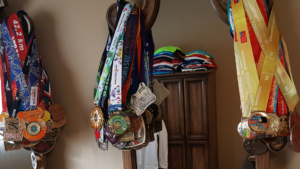
iRun: What’s your secret for not getting hurt?
Rayman: I’ve been hurt. I’ve run through a torn medial meniscus. I’ve run through Achille’s problems. But when I was running fast, 75 to 90 miles a week, I knew three or four days a week to run slow and let my body recover.
iRun: All that time alone to think. What have you learned?
Rayman: Running has to be fun. Sounds corny, but you put one foot in front of the other. You don’t have to devote your whole life to running. Enjoy it. When I started to slow down I accepted it.
iRun: How so?
Rayman: I used to say, ‘When I can’t break three hours, I’d quit.’ Then I said, ‘When I can’t break four, I’ll retire from running.’ I said it at five, too. Now I don’t care.
iRun: What was the closest you came to missing a day?
Rayman: Two years ago, that torn meniscus. I could hardly walk and I said, ‘I can’t do this anymore.’ But I was already dressed and my wife said, ‘You’ve done it before, do it again.’ And I drove to a church parking lot near my house and ran for 30 minutes. Or limped for 30 minutes. That’s my minimum.
iRun: You feel better the next day?
Rayman: No. But the next day I did the same run, and the next day, and by the time I got my MRI results, my meniscus was healing. The surgeon said keep running!
iRun: Incredible.
Rayman: Ever listen to Jimmy Buffet?
iRun: Some.
Rayman: Breathe in, breathe out—and move on.
iRun: Is it healthy what you do?
Rayman: No.
iRun: But you’ve done it for nearly 40 years!
Rayman: I’m going to keep on doing it.
iRun: What are the next marathons you have lined up?
Rayman: Starting April 22, Glass City in Toledo. The following weekend, Waterloo Marathon for St. John’s Ambulance. They’re great over there, I actually race with bib #1 (last year I wore number one and came in last). The following week is Goodlife Toronto. Then the Mudcat in Dunnville; the week after that is Ann Arbor, and the last of the six is Buffalo.
iRun: My God.
Rayman: I mean, as long as I don’t get too badly injured.
iRun: And you’ve really run every day. The day your first kid was born; the day your, I don’t, the birth of your grandson?
Rayman: Yes. I ran the days both my kids were born; ran the day my father passed away, the day my mother passed away. It’s part of my life. It’s like putting on shoes. I don’t think twice, I do it.
iRun: Would you say you have an addictive personality?
Rayman: Very.
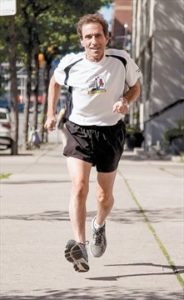







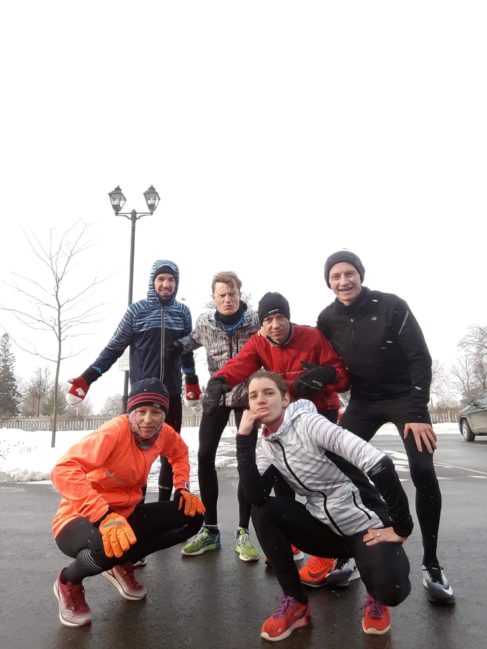






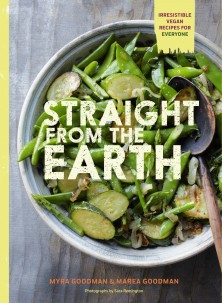

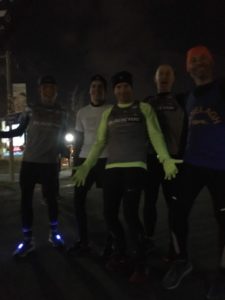

 Our Magazine
Our Magazine
